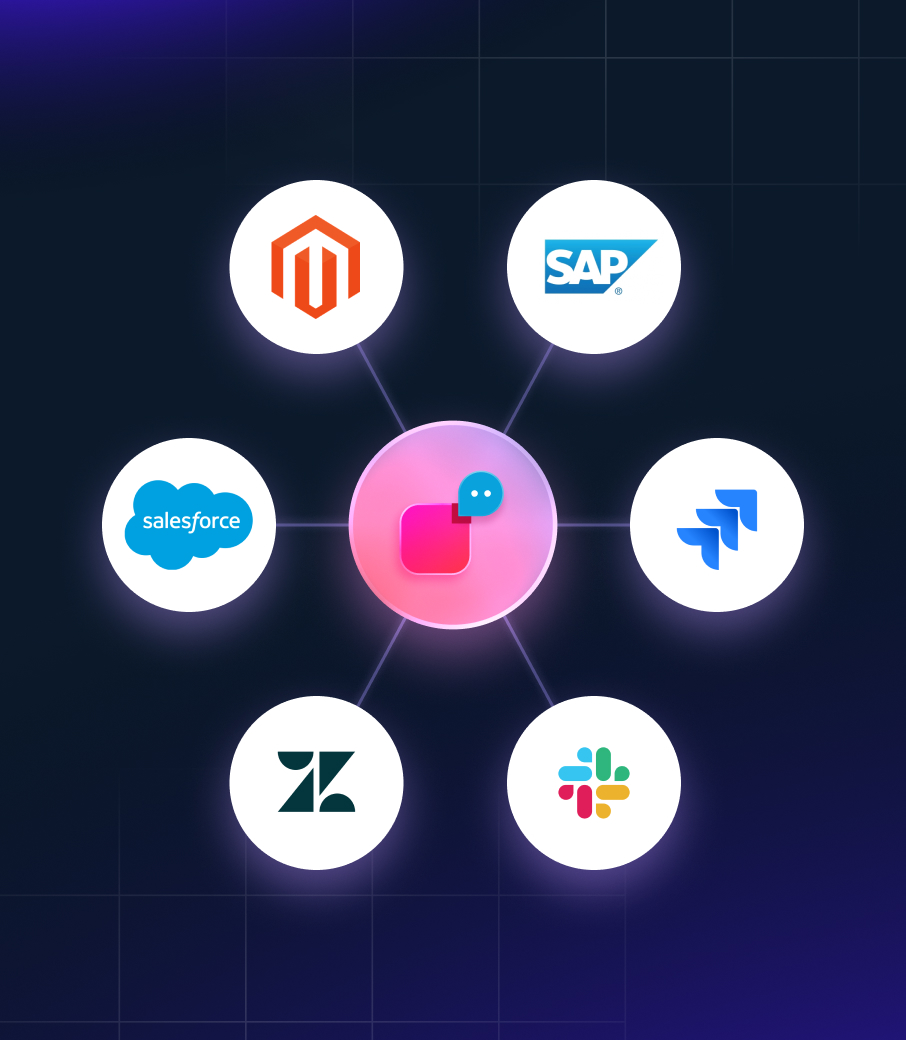Streamline Your Workflow with Our Integrations
Give your customers best experience and personalisation. By integrating your databases and third party tools with Verloop.io, you can provide a superior experience to both your customers and agents.

CRM and Ticketing Software
Access your CRM while paying undivided attention to your customer queries. Verloop.io integrates with about 10+ CRM platforms to offer that seamless customer experience for you too!
HubSpot
HubSpot provides a unified platform for marketing, sales, content management, and customer service. Display information about existing lead, create new leads if they don’t exist, and do more.
LeadSquared
Use LeadSquared, your one marketing automation and CRM solution to increase closures, manage pipelines, and attribute ROI accurately to people, lead sources, marketing activities etc.
Freshdesk
Automate repetitive work, streamline customer communication, and collaborate faster with Freshdesk.
Zendesk
Zendesk is one software to enhance productivity, processes, and pipeline visibility for sales teams
Oracle
Use Oracle to track (in real time) analytics, customer success and support, customer complaints and a variety of other CRM functions.
SAP C4C
SAP C4C provides a robust solution with prepackaged integrations, mobile interfaces,and strong social features.
Payments
Enable your customers to make their payments swiftly via a secure payment gateway. Verloop.io integrates with some of the most trusted payment apps like CCAvenue, Razorpay, and Xendit.
Razorpay
Accept payments from all credit and debit card networks from customers in various countries with Razorpay.
CC Avenue
CC Avenue creates convenient checkout experiences for your customers on the channels preferred they prefer.
Xendit
Simplify checkout processes by accepting and managing payments, creating customised invoices for your customers using Xendit.
Marketing
Seamlessly connect your marketing tools to automate actions and expand the functionality of your services. Sync data in real-time and eliminate the need for back and forth between systems.
CleverTap
Build amazing mobile experience by combining real-time analytics, a powerful segmentation engine, and a suite of engagement tools with Clevertap.
Bombora
Use the largets aggregator of B2B intent data Bombora to understand when your customers are ready to purchase your product.
WebEngage
Use WebEngage to craft personalised campaigns to engage your users through Push Notifications, In-app Messages, SMS, Web Push, Emails, WhatsApp, and FB.
Leedfeeder
Leedfeeder turns anonymous visits into leads with this website visitor tracking software.
Ipdata
Lookup the location of your visitor’s IP Address to personalise content, enrich forms, target ads, enforce GDPR compliance and more with ipdata.

Capillary
Capillary is your customised and cloud-based customer analytics marketing platform made for retailers and consumer businesses.
Messaging Channels
You need to be where your customers are. And honestly, your customers are everywhere! Connect with your customers on different channels from Verloop.io’s unified console.
Route all messages from your WhatsApp to your Verloop.io account. Read and respond to all your customer messages from one place.
Messenger
Use Facebook Messenger to deliver timely messages during your customer’s purchase journey, continue conversations and do more on the platform your customers love.
Build scalable automated and live support on Instagram through Instagram API. Start delivering accurate, blazing fast and secure support to your customers.
More Apps
But that’s not all. Verloop.io also integrates with a multitude of other apps ranging from Google sheets to Zapier to Shopify, etc to complement your Martech stack.
Shopify
Bring in all order information of your customers from Shopify to your support platform. Deal with support tickets, see status of current and past orders, and do more from a single console
Magento
Access customer information easily on Magento – such as shipping addresses, invoices and order info – all from your Verloop.io account.
Frequently asked questions
Verloop.io is built to integrate effortlessly with enterprise systems—whether it’s your CRM, ticketing platform, order management system, or custom APIs—enabling end-to-end automation and unified data access.
Verloop.io supports plug-and-play integrations with popular tools like Salesforce, Zendesk, Freshdesk, Shopify, LeadSquared, Razorpay, MoEngage, and more. Custom REST APIs and webhooks are also supported.
Yes. You can connect your internal systems (CRMs, ERPs, OMS) via backend integrations to fetch user data, update records, or trigger actions—all from within a bot or live chat sessions.
Not always. Verloop.io offers no-code and low-code integration options, along with detailed documentation. For complex use cases, your tech team can work with our integration specialists for full flexibility.
Yes. Verloop.io supports custom API-based integrations and secure data exchanges (via HTTPS and tokens), making it suitable for healthcare, BFSI, travel, and e-commerce systems
When integrated, bots can pull in real-time data to personalise responses, validate inputs, and complete actions like order tracking or KYC checks. Agents, meanwhile, get a 360° customer view on the dashboard, improving resolution speed and quality.
